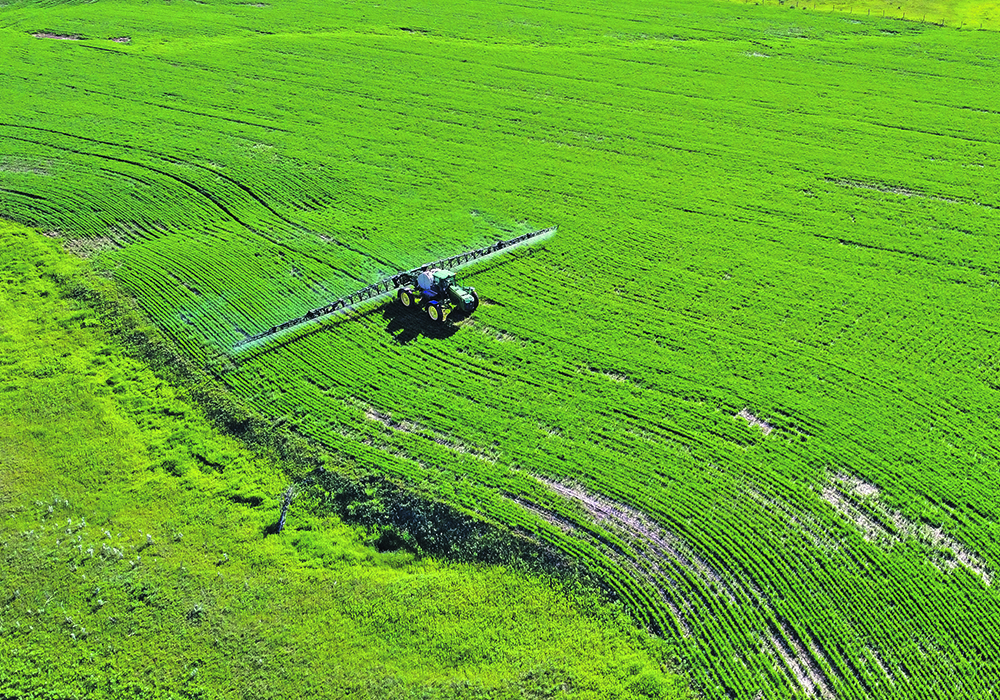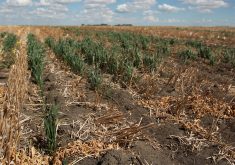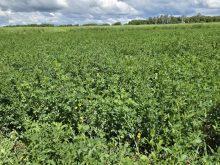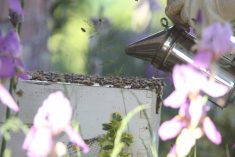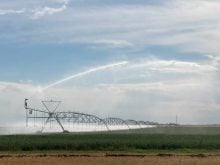Alberta crops in worst shape, but parts of Saskatchewan also struggle while Manitoba cashes in on last year’s moisture
Spring rain that usually hits the Prairies in May came about a month later, and while the situation improved, southern Alberta producers continue to experience dry conditions.
“It’s been wild,” Laura Richard, Agriculture Canada agroclimate analyst, said of this spring.
Leading into the last week of spring, Richard said several record 24-hour rainfall events hit Alberta. But the volume and speed in which the precipitation fell may have not allowed for soil infiltration.
“The recent rainfall has helped the crops that are already OK or just starting to see drought impacts,” said Richard.
Read Also

Agriculture ministers commit to enhancing competitiveness
Canadian ag ministers said they want to ensure farmers, ranchers and processors are competitive through ongoing regulatory reform and business risk management programs that work.
“Unfortunately, in the areas especially south of Calgary, we’ve got reports from High River and Vulcan County where there are significant drought impacts being reported on those crops.”
Crops that had started germination when the rains did finally hit are unlikely going to be helped much.
“For those producers, this rain hasn’t done as much as you would think to alleviate those concerns,” she said.
Coming into the season, the Peace Country was facing significant soil moisture deficits, which was followed by devastating wildfires. But for much of June, that situation has dramatically shifted to the point where the northwest region of the province has seen some localized flooding.
That part of Alberta is seeing soil moisture levels improve while much of Saskatchewan and Manitoba have received timely rains, which have led to solid growing conditions.
But southern Alberta continues to struggle except for some areas along the U.S. border.
The timing of this year’s rain at the end of spring following extreme heat and low mountain snowpack has allowed for little help from plant genetics or irrigation.
Steve Larocque, agronomist with Beyond Agronomy in Three Hills, Alta., said conditions in south-central Alberta have resulted in 20 to 30 percent of crops not germinating.
“We have fields that are nearing flag leaf, so they’re nearly half done their lifecycle, and the remaining 30 percent that never germinated is at one leaf because it finally rained,” he said. “So, we’ll have many areas in multistage crops, which makes harvesting very challenging.”
Again, the timing of the rains removed the option of reseeding.
“If it had rained earlier, maybe we would have reseeded but considering it never rained — maybe three-tenths of an inch — there wasn’t a lot we could do,” said Larocque. “Nor willing to do much for this crop that was looking to fail anyway.”
The exception is canola in the region, according to Larocque.
“Because it wasn’t setting its yield potential early, it’s going to do just fine if it continues to rain. It looks actually quite good across the whole territory,” he said.
“The cereal crops — wheat and barley — we’ll see. We’ll definitely be way under our averages.”
As for the rest of the Prairies, Richard said, some areas of Saskatchewan near the Alberta and Manitoba borders are continuing to see dry soil moisture levels with the middle of the province in good shape.
Manitoba soil moisture levels were in good condition heading into the winter, which locked in conditions heading into the spring.
“Right off the bat this spring, they were in just a bit of a better position, especially when it came to seeding. It was quite cool quite a lot later so most of their delays were due to the cooler temperatures, not the lack of soil moisture,” said Richard.
But some parts of central Manitoba are reporting signs of drought stress, she added.
Modelling of the central part of the province running from the Interlake region to the U.S. border is showing extreme dry conditions, but Richard says so far that hasn’t materialized in the crops because soil moisture levels appear to be pulling them through.
Global environmental trends, specifically the transition from La Nina to El Nino, could be part of this spring’s weather conditions.
“I have never seen that change happen so quickly and over a growing season,” said Richard. “I think the impact is in the forecasting. We’re having a hard time forecasting with good confidence exactly what is going to happen.”
As far as what might constitute timely rains heading into the summer, Richard said for crops on the cusp of failure, rains leading into the beginning of July could pull them back from the brink.
But for southern Alberta, that’s likely not going to be enough.
The current seasonal forecast for the Prairies is far above normal temperatures regardless of rainfall, said Richard, with what rainfall is predicted expected to miss southern Alberta and southwestern Saskatchewan.


